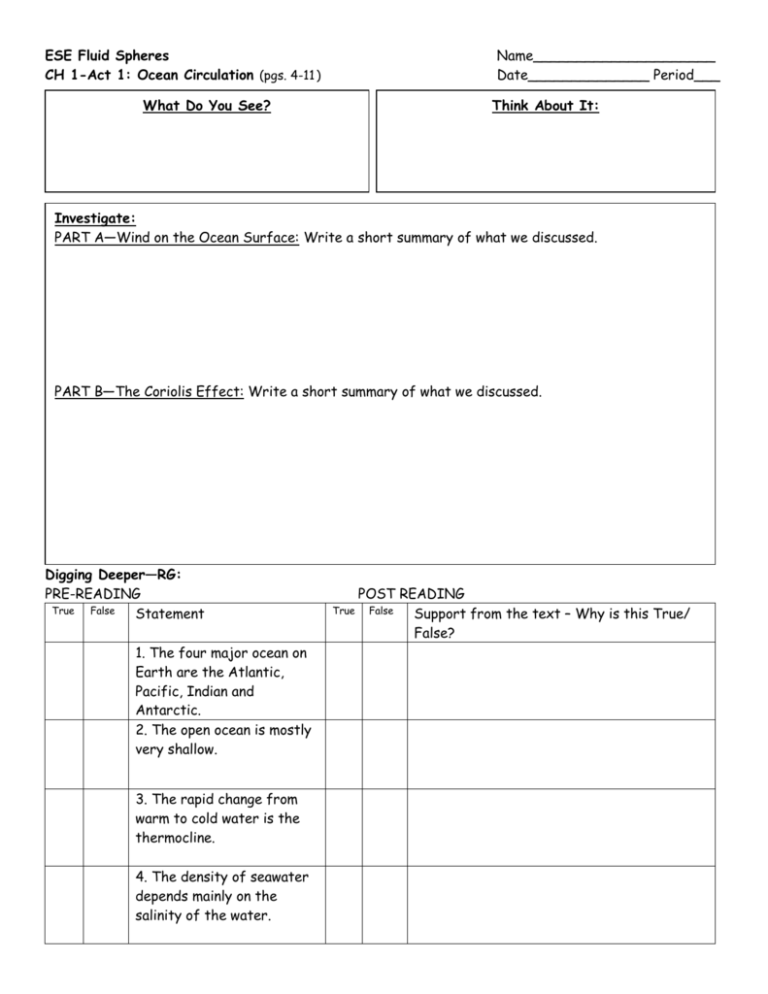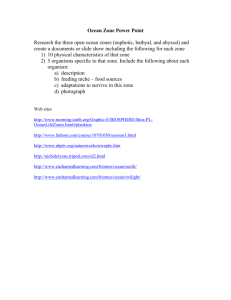ESE Fluid Spheres Name_____________________ CH 1
advertisement

ESE Fluid Spheres CH 1-Act 1: Ocean Circulation (pgs. 4-11 ) Name_____________________ Date______________ Period___ What Do You See? Think About It: Investigate: PART A—Wind on the Ocean Surface: Write a short summary of what we discussed. PART B—The Coriolis Effect: Write a short summary of what we discussed. Digging Deeper—RG: PRE-READING True False Statement 1. The four major ocean on Earth are the Atlantic, Pacific, Indian and Antarctic. 2. The open ocean is mostly very shallow. 3. The rapid change from warm to cold water is the thermocline. 4. The density of seawater depends mainly on the salinity of the water. True POST READING False Support from the text – Why is this True/ False? 5. Oceanographers study the ocean. 6. The circulation of the upper layer of the ocean is caused mainly by density. 7. The force that appears to make water move in a curved path is the Coriolis force. CYU: 2. How does the wind cause surface currents in the ocean? 3. Why are waves an important feature of the ocean surface? 4. Describe the Coriolis effect in your own words. U&A 2. How would you expect waves to change over time when: a) wind speed increases? b) wind blows over a part of the ocean for a long time? 3. Refer to Figures 2 and 3 (thermocline and pycnocline) to answer the following questions: a) What is the temperature of ocean surface water at the Equator, in the tropics, and at high latitudes? b) In what part of the ocean is the thermocline best developed? Least developed? Explain using your understanding of the relationship between temperature and density in the ocean. c) In what part of the ocean is pycnocline best developed? Least developed? Explain using your understanding of the relationship between temperature and density in the ocean.







